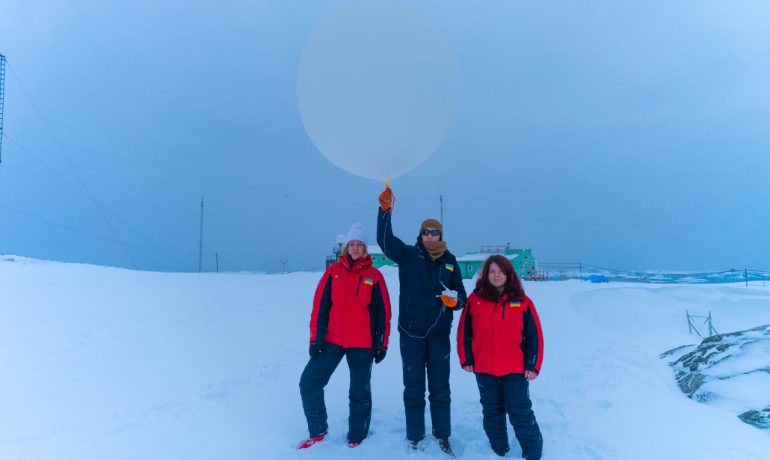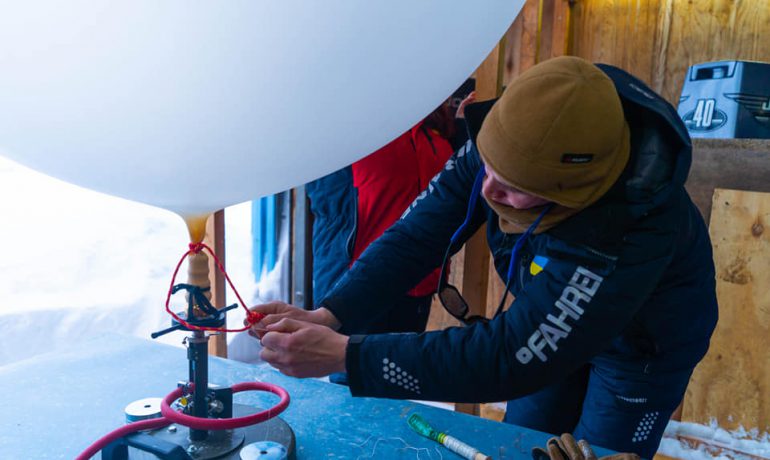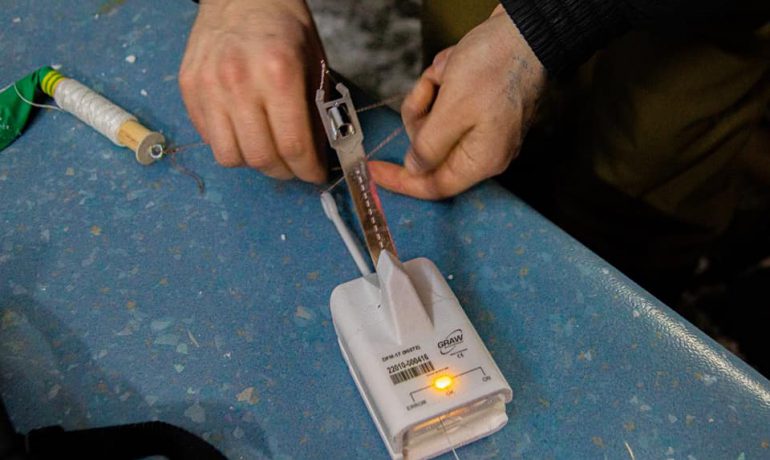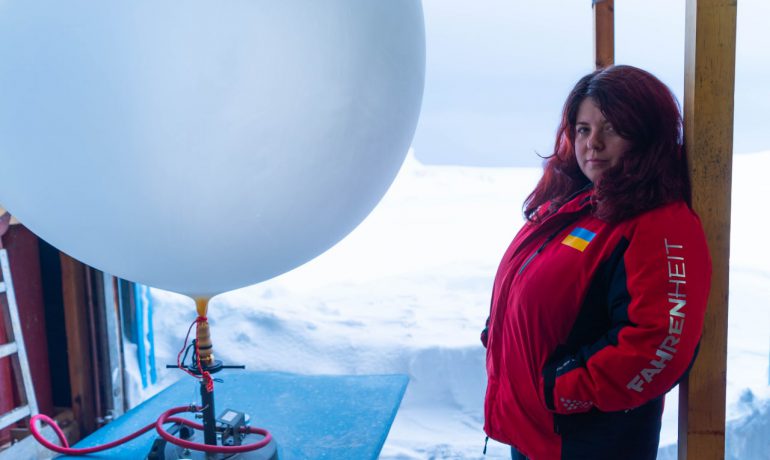In April of this year, for the first time in the history of Ukrainian Antarctic expeditions, our meteorologists at Vernadsky began continuous research of the atmosphere with the help of radiosondes.
It is a special sensor that rises on a helium balloon, and all the way it measures a number of parameters, immediately transmitting them to the ground.
This work is part of the international project Year of Polar Prediction (YOPP), a voluntary initiative in which scientists explore the role of additional data in improving weather forecasts. The project has been running since 2017 and has already proved its success, but now its uniqueness lies in the fact that it is taking place in the Antarctic, in winter, and with the participation of Ukraine.
The main direction of YOPP is aerological measurements, that is, “scanning” of the atmosphere at an altitude of up to 25 km using radiosondes. These data are considered the most significant source of information for weather forecasting, because near-surface monitoring (up to 2 meters) allows to see only a part of what is happening in the atmosphere.
At the same time, determining processes, in particular, active cyclonic vortices and atmospheric fronts, develop at altitudes of 3-10 km and cause the greatest difficulties and errors in forecasting. Scientists assume that such errors are due to insufficient observational data. To check this, YOPP provides for an increase in the number of measurements, significantly or not, but to improve the prediction.
It is also planned to study more widely the cases of “atmospheric rivers” – flows of high humidity in the atmosphere, which are quickly transferred from warm regions to Antarctica. This study is very important for the Antarctic region, because “rivers” bring the lion’s share of precipitation to the continent and are the most difficult to predict.
Since the study of the atmosphere is a global process, almost all Antarctic stations that can conduct radio sounding have joined the YOPP. In certain periods, some stations launch probes more often, and some (for example, Vernadsky) have begun to do this for the first time. After the end of the Antarctic winter, all data (additional and regular) will be collected for joint analysis by scientists and organizations that have supported the initiative.
And although before this project, our station was “armed” with the latest meteorological equipment, in particular, a modern ground-based radar, participation in YOPP is an opportunity to join world-class research, revive aerological measurements (stopped more than 30 years ago) and obtain unique data in the most difficult weather conditions.
Of course, this requires a lot of skills and endurance from our polar explorers. To capture the state of the still undisturbed atmosphere, meteorologists begin a coordinated launch of probes 1-2 days before the approach of the cyclone, when there are still no signs of worsening weather.
But the most interesting thing begins at the moment of the passage of atmospheric fronts, when it is quite windy near the station, and the wind speed exceeds 15 m/s. At this time, the work of meteorologists becomes quite heroic: they must not lose the probe and the moment agreed with everyone. Of course, under such conditions, this mission is not always feasible, but in general, Ukrainian polar explorers have already managed to carry out enough successful probe launches and make an important contribution to the joint initiative.
We’ll let you know the results later.
We thank Denys Pishniak for interesting information, as well as members of the 27th UAE for photo and video materials.






